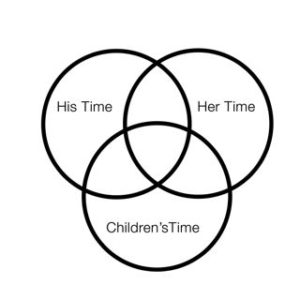
This dramatic cumulonimbus was captured at 37,000 feet over the Rocky Mountains in Colorado. Pilots know to avoid going near these thunderclouds, charting a course around them for the comfort of passengers and safety of the aircraft. Even coming close will cause turbulence—the jet trembles and shakes, often violently.
Pilots rate turbulence as mild, medium, or severe. Thankfully, excellent communication between pilots means that patches of bumpy air can be predicted well ahead of time and avoided by changing elevation or course. But sometimes turbulence is unavoidable. In that situation, fearful flyers grip armrests, pop benzodiazepines, and turn up the volume on their headsets. Eventually the air smooths out, and everyone releases their breath…and their grips.
Staying Steady During Turbulent Times
Jet travel is a great metaphor for life. Sometimes the bumpy moments are so extreme that there’s nothing you can do but sit with it and hope you don’t have to pee. But sitting with the rocky ups and downs of life isn’t always easy.
When a pilot acquaintance asked me how to survive the turbulence of his current marriage problems, I asked him what he tells his passengers to do when the flight encounters a rough patch.
He said, “I tell them to fasten their seat belts.” We have all heard the familiar words, “The captain has turned on the seat belt sign. Please return to your seats and fasten your seatbelts.” Now, I confess I sometimes use this moment to zip down the now suddenly empty aisle to use the lavatory (but only in mild turbulence.) But basically, in bad weather you need to stay seated and wait it out.
I enjoy flying, but that wasn’t always true. I was a fearful flyer for about six years. I wasn’t phobic, I didn’t avoid flying or have panic attacks, but I was alert to every squeal of the engine, movement of the wing flaps, or ring of a cabin bell,. During euphemistically described moments of “bumpy air,” I would glance up at the flight attendants’ faces to see if they were showing signs of concern.
I wasn’t afraid of heights or of being in an enclosed space—my fear was simply of crashing. Kaput, end of life, and the imagined 60 seconds of sheer terror I expected to feel going headlong into death.
We have no control over death. Once I came to terms with accepting that I could die in a plane crash, I became less afraid. It wasn’t that I was convinced by statistics showing how rare such deaths are; fearful flyers are rarely comforted by the statistics. Acceptance, in contrast, goes a long way in dealing with the bumps we encounter in life.
I found out this week that I have a 50/50 chance of having the genetic mutation associated with hereditary breast and ovarian cancer (HBOC). My family on both sides has had lots of cancer. But through advanced genetic testing, I now know that my family members have the BRCA2 mutation going back three generations. As I await the results of my blood test, I am again reminded of our lack of control. For me, it’s the toss of a coin: I either have it or I don’t. If I do, I have an 85% chance of developing breast cancer and lower risk of other cancers (ovarian, pancreatic, melanoma, and stomach). I am not comforted by those odds.
Flying has infinitely better odds. But after a week of emotional turbulence, I will meet my fate with HBOC with as much grace as I can muster. It hasn’t been an easy week, to be sure, veering between certainty of bad results and certainty of escape. So while I wait and hope that I end up on the happier side of the 50-50 split, I will fasten my seatbelt and try to steer as safe a course through the thunderstorm as I can, with all the support I’ve gathered over the years: family, friendship, work that I love, and resources (such as FORCE). Coping skills, like seat belts, keep us safe. While we generally don’t enjoy restraints, a seatbelt helps to contain our emotions so they are less likely to overwhelm.
I am reminded, once again, of a lesson taught by Thich Nhat Hanh: “When we have a toothache, we know that not having a toothache is a wonderful thing.” (Peace Is Every Step: The Path of Mindfulness in Everyday Life, 1992, p. 38). Finding comfort in the face of difficulty is possible—by riding out the painful moments and trusting that the next moment contains a potential fullness, some simple pleasure waiting to be noticed. So when the seatbelt sign is again turned off, you are free to move about the cabin. Add take a deep breath.








